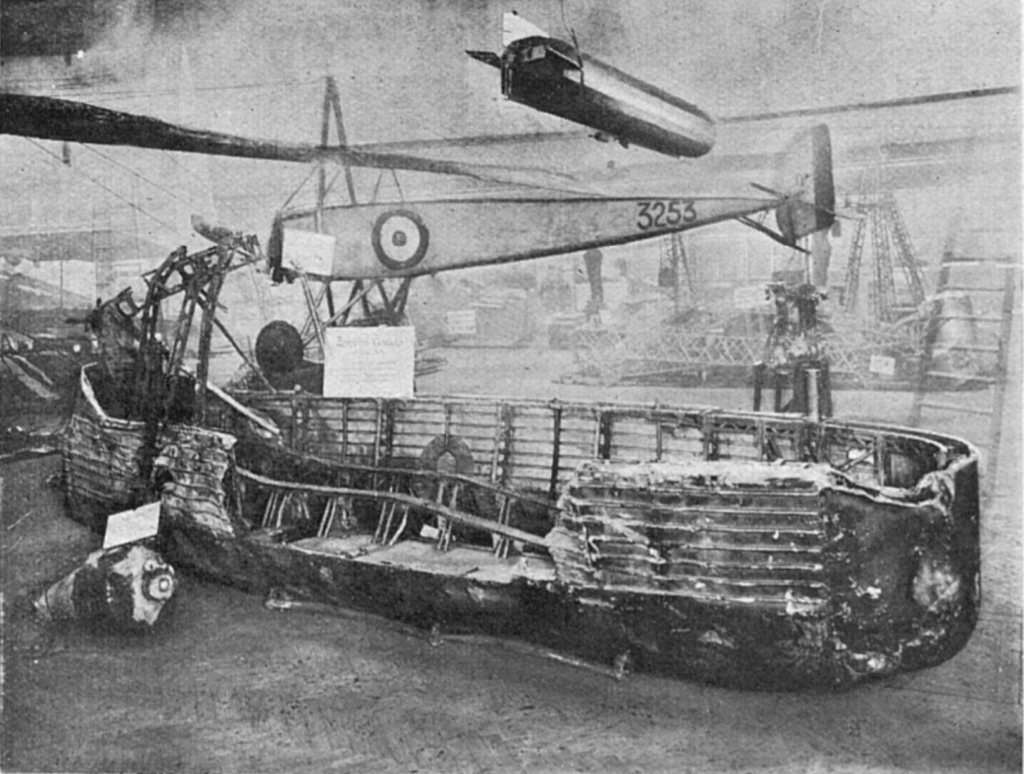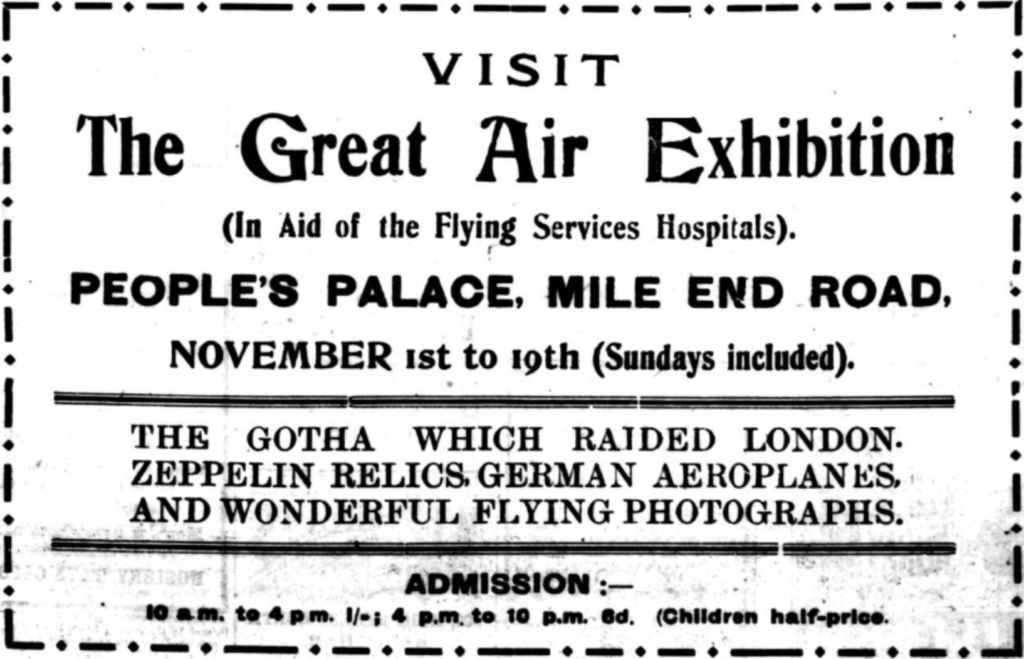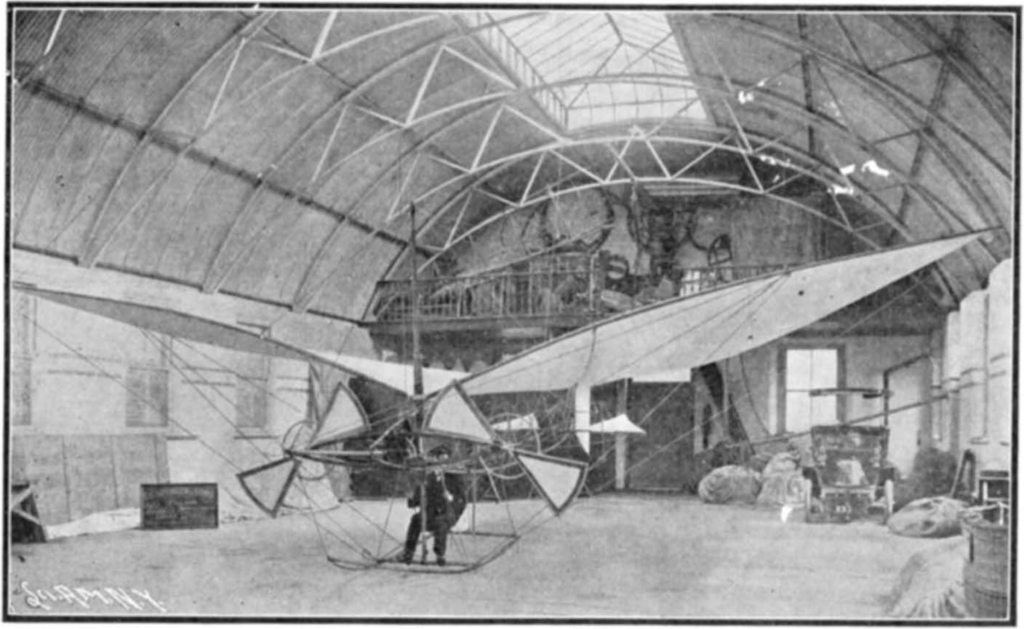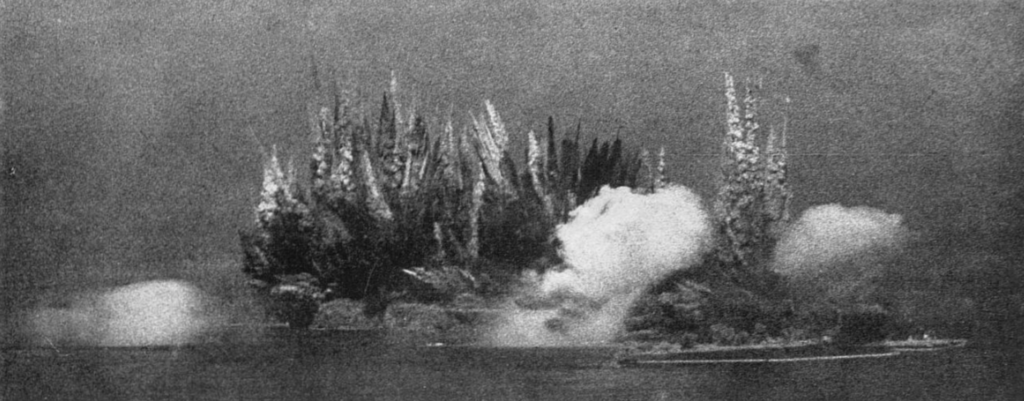Lady Drogheda’s Great Air Exhibition — III
The ostensible purpose of the Air Services Exhibition was to raise money for ‘the FLYING SERVICES HOSPITALS’ and ‘VISCOUNT FRENCH’S WAR CHARITIES’, as you can see in the poster above. But those laudable aims didn’t mean it wasn’t also propaganda (as you can also see in the poster above). And, despite the name of the […]







